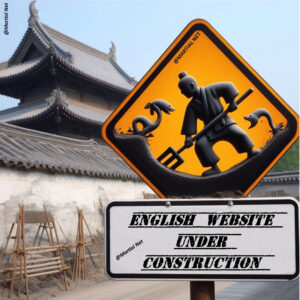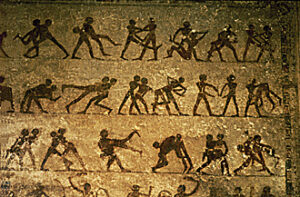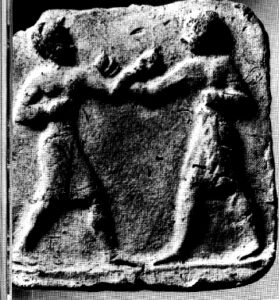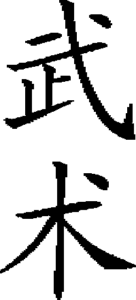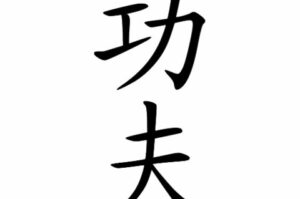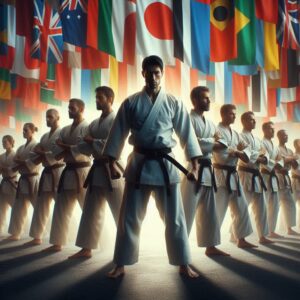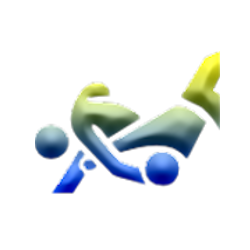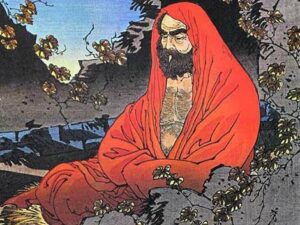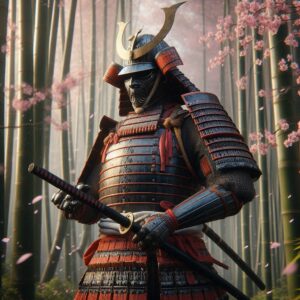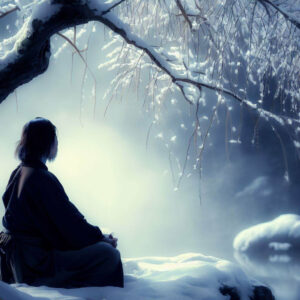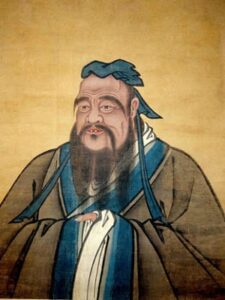History of Martial Arts
Origins and Evolution
The Difficulties of Researching Martial Arts
Composing a treatise on the history of martial arts and their evolution over time is a complex undertaking, considering the scarcity of reliable historical sources, especially regarding their origins. In the following chapters, we will attempt to provide a historical overview of the vast world of martial arts, outlining a timeline of the most significant events. We do not claim to offer an absolute truth, as even among the most authoritative historians there are many discrepancies in accounts and dates.
We apologize for any errors or inaccuracies, including in transliterations. We invite anyone wishing to start a discussion to use the comment space at the bottom of each page.
From Primal Struggle to Martial Arts
Most of the information handed down about the history of martial arts has been transmitted orally through generations within various schools, making it difficult to distinguish fact from legend or fantasy.
Defending oneself against ferocious animals and surviving hand-to-hand combat with other humans were among the earliest needs felt by humanity. It is therefore natural to assume that from the first blind blows struck by our cave-dwelling ancestors, driven by the instinct of survival, to the modern and refined martial disciplines we know today, there is a connecting thread made up of practical experimentation and theoretical study.
It can be realistically stated that the first time a human clenched their fist, realizing that a blow struck with a specific part of the body could be more effective than another, was the first step towards codifying modern martial arts styles. From this awareness to understanding that not only limbs could be used as weapons, but that there are points on the body more susceptible to pain where it is useful to direct precise blows, the step was short. However, it was not yet sufficient.
To speak of martial arts in the modern sense of the term, as the study of appropriate defense techniques for every situation, requires further effort.
Early Traces of Combat Forms in Martial History
The origins of martial arts are lost to the mists of time and are the subject of much debate among scholars. Some believe that the first forms of stylized combat developed in Mesopotamia and reached the Orient via the Silk Road. This hypothesis is supported by Babylonian graffiti and statuettes dating back to between 3000 and 2000 BC, which depict gestures typical of martial arts. One relief shows a man with his hand in a characteristic parry position, while another shows two men wrestling, holding each other by the belt, a form of combat similar to sumo, still popular in Japan today.
However, there is also evidence of forms of combat in other parts of the world. For example, the murals in Tomb 15 at Beni Hasan, in the ancient Egyptian city of Menat Khufu, about 20 kilometers south of modern-day Minya, dating back to around 3400 BC, represent the oldest work showing some form of wrestling.
It is difficult to establish with certainty the exact origin of martial arts, as they developed independently in different parts of the world and influenced each other through cultural exchange. In Europe, the first traditions of martial arts date back to Ancient Greece, with boxing (pygme, pyx), wrestling (pale), and pankration in the Ancient Olympic Games. The Romans produced gladiatorial combat as a public spectacle. In Africa, the oldest known martial arts date back to the beginning of African civilization. In the Middle East, in Iran (when it was Persia), wrestling was a skill expected of Persian warriors.
Origins of the Term 'Martial Arts' and Their History
The term “martial arts” is derived from the Latin and literally means “the art of Mars” (the mythological Roman god of war). It came into common use in the early 1960s with the introduction of Eastern martial arts to the West, and is often associated with these, particularly Chinese, Japanese, and Korean martial arts.
The Term Wushu in Chinese
In Chinese, the term wushu is composed of two characters: “wu” and “shu”. The character “wu” signifies “military” and carries connotations of “martial, valiant, and proud,” while “shu” translates to “art, skill, ability, or technique” (see: History of Chinese Martial Arts). Thus, the exact interpretation of the word wushu is “martial art”. The term wushu first appeared in the work “Zhao Ming Taizi Wenxuan” (Collection of Writings of the Illustrious Heir Apparent) by Xiao Tong, who lived from 501 to 531 AD, at the court of Nanjing, a center of art and culture that flourished under Emperor Liang Wu Di.
The term wushu underwent a significant reevaluation in 1911. The last imperial dynasty collapsed, and the Republic of China was established. In 1926, with the rise of the Nationalist Guomindang party, the Central Nanjing School was founded. This institution reworked traditional martial arts, defining them with the term Zhongguo Wushu, abbreviated as Guoshu (“National Art”).
The Term Kung Fu and Its Dissemination
For the Chinese, the practice of wushu is a millennia-old tradition, while in the rest of the world, particularly in Italy, it arrived in the mid-1970s with the spread of Hong Kong cinema, especially films featuring the martial arts performances of Li Xiaolong (Bruce Lee). Despite this, the use of the term wushu is not uniformly widespread globally, often replaced by other names such as kung fu, guoshu, gong fu, quan fa, etc., creating confusion for those new to the discipline.
Kung fu, the English transliteration of the Chinese term gongfu, literally means “skill acquired through hard work” and can simply indicate “time spent on some activity” for a Chinese person. Although in the West the term kung fu is commonly used to refer to Chinese martial arts, it would perhaps be more correct to use the full form “wushu kungfu”.
Bujutsu and Budo in Japan
Bujutsu is the Japanese term for a collection of combat systems transmitted since the Japanese feudal era. The term collectively refers to unarmed or armed martial arts that, at least until 1868 (Meiji Restoration), were the specific domain of the military class (Buke), whose typical representative was the Bushi or Samurai.
Bujutsu is composed of the kanji for “warrior” and “technique,” and literally means “warrior techniques,” understood as a set of moves to be used in combat, with a purely practical meaning. A more classic variant of the term is Bugei, which means “martial arts” or “arts of the warrior.” Ancient Bujutsu (koryu) must be distinguished from contemporary Budo, a reworking based on more modern educational systems (gendai), emphasizing the philosophical, ethical, and moral aspects, as well as fighting techniques. Budo is composed of the kanji for “warrior” and “Way, path,” translating literally as “Way of the warrior” (see: History of Japanese Martial Arts).
Differences between Martial Arts and Combat Sports
When examining the history of martial arts, it is necessary to distinguish these disciplines from various combat sports such as boxing, savate, full-contact, and the like. The primary difference lies in the fact that, unlike combat sports, in martial arts, combat is not an end in itself but is part of a broader system that integrates combat, philosophy, and religion.
The goal of practitioners is not only to overcome the resistance of an opponent but also to go beyond combat ability, including the enhancement of physical, mental, and spiritual capacities. This occurs through an analysis of one’s self in order to live in harmony with the universe, transforming martial practice into a method for strengthening both the body and mind through exercises closely linked to Eastern medicine. Ultimately, it is a sporting practice capable of developing the best qualities of human beings: courage, determination, coordination, and sociability.
The Principles of Martial Arts
The fundamental principles in the history of martial arts never pit strength against strength but rather leverage agility and precision.
Developing even a rudimentary system of fighting or striking techniques does not mean understanding the true meaning of martial arts. A large and muscular man could always prevail over a physically less endowed individual or a woman. The study of combat techniques arose, as mentioned, from the need to escape dangerous situations. It is logical to expect that it was precisely the weak and women who were the first to want to learn a precise technique to defend themselves against the crude attacks of other human beings, driven by the desire to overpower rather than defend themselves.
History demonstrates the foundation of this intuition. For example, wing chun, one of the most effective styles for self-defense, was devised by a woman, and jujutsu seems to have been codified by a doctor who observed the suppleness of willow branches under the weight of snow (see: the legend of the willow). The basic principle of all martial arts is to never oppose force with force but to exploit qualities such as agility and precision, typical of individuals less endowed with muscular power but capable of using intelligence to survive.
Thus arises the legend of the weak defeating the strong, of David who, with a single slingshot, defeats the giant Goliath. This is the fundamental element of the study of martial arts: the search for the most effective technique, even in the hands of a seemingly defenseless being.
